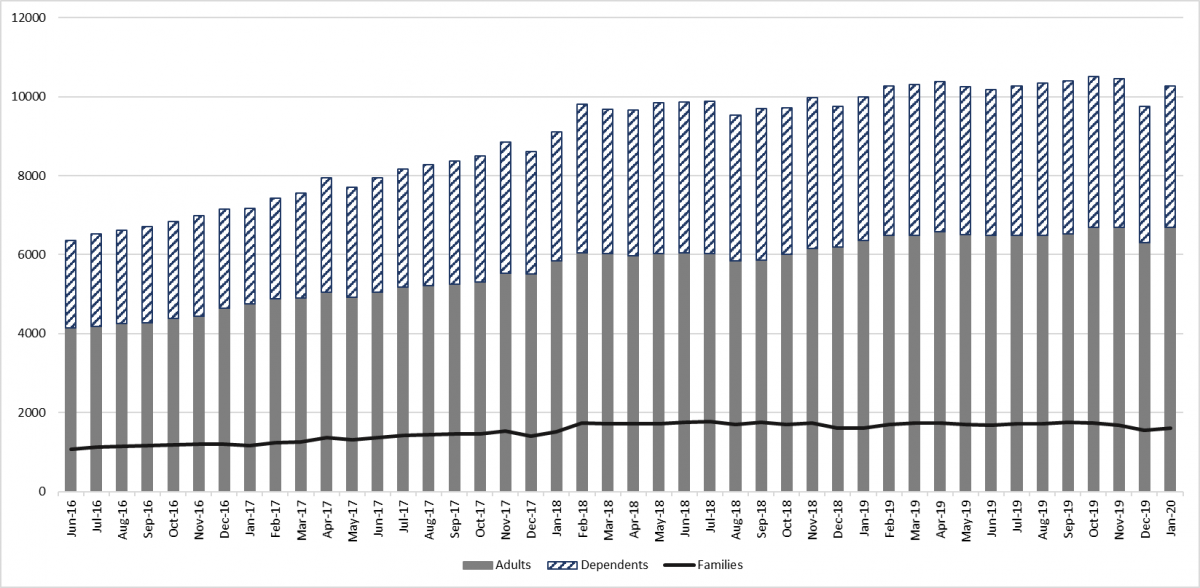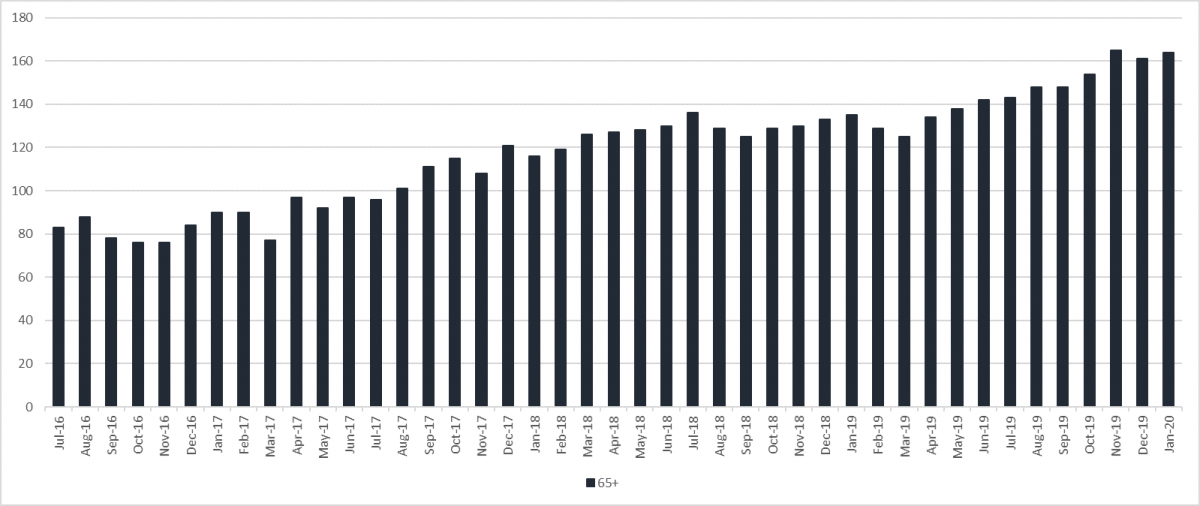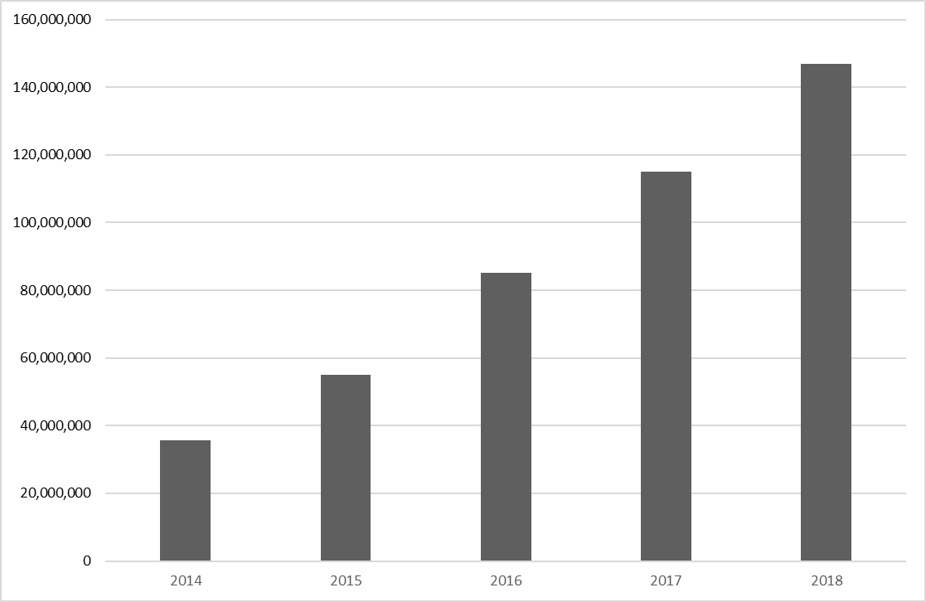Housing First key to addressing Homelessness

The first pillar of Rebuilding Ireland was to Address Homelessness. The Key Objective of this pillar was to
Provide early solutions to address the unacceptable level of families in emergency accommodation; deliver inter-agency supports for people who are currently homeless, with a particular emphasis on minimising the incidence of rough sleeping; and enhance State supports to keep people in their own homes.
This was an ambitious objective. Key actions toward meeting it included ensuring by mid-2017 that hotels were only used in limited circumstances for emergency accommodation for families, by meeting housing needs thorough the Housing Assistance Payment (HAP) and general housing allocations. A Rapid Build Housing programme was to deliver 1,500 units, and a Housing Agency initiative was to add a further 1,600 units through acquiring vacant houses.
Unfortunately, this was not delivered. In July 2016, when Rebuilding Ireland was introduced, 6,525 people accessed emergency accommodation (4,177 adults and 2,348 dependents). By January 2020, that number had increased by 60 per cent to 10,271 people (6,697 adults and 3,574 dependents). Family homelessness has increased by 42.5 per cent (from 1,130 families in July 2016 to 1,611 in January 2020) (Chart 1).
Chart 1: Homelessness, July 2016 to January 2020

Source: Department of Housing, Planning and Local Government Homelessness Statistics, various years
These are the ‘official’ data on homelessness. They do not include those staying with family and friends, they do not include rough sleepers, they do not include homeless families temporarily accommodated in housing owned by their Local Authority, they do not include the women and children in domestic violence refuges, and they do not include asylum seekers in transitional accommodation. In 2019, a report commissioned by the European Commission referred to the current state of data collection on homelessness in Ireland as “statistical obfuscation if not ‘corruption’.” (Daly, 2019). However, even with obfuscated data, it is clear that Rebuilding Ireland has not delivered the promised solutions.
Family Hubs were first introduced in 2017 as an alternative to hotels and B&Bs. In response, the Irish Human Rights and Equality Commission (IHREC) warned of the risks: of institutionalising families and normalising family homelessness. This warning was ignored, with Minister Eoghan Murphy TD urging Local Authorities to build more ‘rapid build’ Family Hubs at the Second Housing Summit in January 2018, and increased funding for Family Hubs provided in Budgets 2019 and 2020.
A report published in April 2019 by the Ombudsman for Children’s Office (OCO) shows just how prescient IHREC’s warnings were, as children as young as 10 describe their living conditions as being “like a prison”.
To give just one example from the Report:
“Hannah (aged 8), cried and told us that the Hub was “like a children’s jail”. She expressed extreme worry and fear for her younger brother Niall (aged 5) who had tried to run away from the Hub on several occasions. She told us that when her mother was having a shower, she would sit on a chair in front of the door so her brother could not run away. Niall had sneaked out of the Hub once already and threatened to throw himself out of a bedroom window.”
No eight year old should feel the weight of responsibility to protect their five year old brother from running away or jumping out of a window. And no five year old should feel that these are their only options.
Other children interviewed for the Report spoke of not being able to have friends over to visit, not having a quiet place to read or do homework, the experience of having to sign in and out, and experiences of bullying.
While the Report does point out that Family Hubs have been found to be better than hotel rooms, in the long-term they remain an unsuitable solution.
And what of our ageing population? The number of people aged 65 and above who are homeless has almost doubled since the introduction of Rebuilding Ireland (from 83 in July 2016 to 164 in January 2020), although there were fluctuations during that period (Chart 2). The overall homeless population accessing emergency accommodation decreased by 717 between November and December 2019, however just four of these were aged 65+. Between December 2019 and January 2020 the number had increased by three. While there is a relatively low instance of homelessness among adults aged 65+, the rate of increase since the inception of the Rebuilding Ireland plan is concerning. Frailty is often a challenge that comes with ageing and is exacerbated by poor living conditions. These are Ireland’s most vulnerable citizens, and we are failing to meet their most basic needs.
Chart 2: Homelessness, Age 65+, July 2016 to January 2020

Source: Department of Housing, Planning and Local Government Homelessness Statistics, various years
In terms of providing long-term solutions, as provided for by Rebuilding Ireland, to the end of 2018, just 423 of the 1,500 units promised under the Rapid Build Programme were delivered, while regenerations have delivered just 507 units.
Financial Costs
The societal cost of homelessness is, as yet, unknown. Children born into, or at risk of, homelessness are presenting to services unable to crawl or walk due to lack of space and unable to chew food because their parents have no option but to maintain a diet of ready-made pureed food as a source of nutrition far beyond the stage when other children their age would have been weaned[1]. This is also reflected in the concerns reported by Temple Street Children’s University Hospital in its report of 842 children being discharged into homelessness in 2018[2] and a study conducted by the Royal College of Physicians of Ireland. Time lost in the first five years of a child’s development is not easily recovered. It requires wraparound supports, including physical and speech therapies, counselling services and dieticians.
In terms of the monetary cost of physical accommodation, since 2014 €438 million has been spent by Local Authorities on emergency accommodation. In 2018, Local Authorities reported spending almost €147 million, an increase of 311 per cent since 2014 (Chart 3).
Chart 3: Local Authority Expenditure, Emergency Homelessness Accommodation, 2014 to 2018

Source: Department of Housing, Planning and Local Government, Local Authority Regional Financial Reports, various years
Local Authority expenditure on homelessness prevention and tenancy sustainment was just €10 million in 2018. Budget 2020 allocated €166 million to emergency accommodation and homelessness prevention. In 2018, the total expenditure to these two budget lines was just under €157 million. In real terms, therefore, the increase amounts to less than 6 per cent, whereas the increase in the number of homeless people accessing emergency accommodation between October 2017 (when Budget 2018 was delivered) and November 2019 was over 23 per cent.
Among the actions contained in Rebuilding Ireland to prevent homelessness was the establishment of a service to provide legal and financial supports to home-owners in late stage mortgage arrears and an increase in Mortgage to Rent supports.
The former became known as Abhaile, a project under the remit of the Citizens Information Board. This project increased funding to MABS (the State’s Money Advice and Budgeting Service) existing mortgage supports in place since September 2015; continued to fund the Accountants’ service, put in place in October 2017; and funded a new voucher system for borrowers in late stage mortgage arrears to access a Personal Insolvency Practitioner or a Consultation Solicitor for one meeting to determine eligibility for an insolvency arrangement. According to the Second Annual Report[3], 95 per cent of borrowers who accessed a Personal Insolvency Arrangement and 86 per cent of those who accessed a voluntary arrangement through MABS stayed in their home. However, even in this context the numbers can be misleading. Data relating to Personal Insolvency Practitioners related to individual borrowers, while data relating to MABS services relate to borrower households.
MABS advisers supported 1,150 borrower households; of these, 85 per cent (978 households) will remain in their home. Personal Insolvency Arrangements (PIAs) were put in place in respect of 128 borrowers, 122 of which remained in their home. Of these, almost half (59 PIAs) were on the basis of a ‘split mortgage’, which effectively defers payment on a proportion of the mortgage until a future date. This future date could be after the end of the PIA, leaving borrowers with little capacity to pay a lump sum and no recourse to insolvency (as borrowers can only access one PIA in their lifetime). The sustainability of these arrangements over the remaining income generating years of the borrower is questionable at best.
Government has committed a budget of €15 million over three years to the Abhaile scheme. Of this, €5.8 million will fund vouchers to access a first appointment with a Personal Insolvency Practitioner or accountant, €3.5 million will fund a communications campaign, €900,000 will resource staffing for the Abhaile project team and additional MABS advisors, and €4.8 million is allocated to the Department of Justice and Equality to cover the cost of providing legal advice and supports.
1,150 borrowers were supported by MABS to access sustainable voluntary arrangements, a further 1,111 borrowers were in progress to an informal solution having accessed the services of a Personal Insolvency Practitioner, compared to just 122 Personal Insolvency Arrangements. Informal arrangements are proving more accessible and successful than the formal processes for borrowers and far more cost effective for the Exchequer. MABS, established in 1992, provided this service before the introduction of the Abhaile scheme. Rebuilding Ireland has produced very little of substance, at significant cost, in support of borrowers in late stage mortgage arrears.
Mortgage to Rent is not providing solutions either. According to the Housing Agency’s Mortgage to Rent Status Update for Q3 2019[4], a total of 4,903 cases have been submitted to date, 3,223 of which were ineligible or terminated during the process or were in respect of households deemed to be over- or under-accommodated. Since its introduction in 2012, just 586 cases have been successfully completed. A review of the Mortgage to Rent Scheme was conducted in February 2017[5]. While the eligibility criteria for borrowers in mortgage arrears remained largely unchanged, one of the main outcomes of this review was the introduction of a new funding model, using private equity. Private equity vehicles are, by their nature, profit driven. Tight regulations and buy-back options for the State must exist to ensure that Mortgage to Rent tenants do not fall foul of market fluctuations.
Homelessness is becoming normalised. According to the Homelessness Quarterly Progress Report (April to June 2019), 44 per cent of all homeless people in Dublin accessing emergency accommodation have been doing so for a year or more, with 18 per cent accessing emergency accommodation for two years or more. The same report for the following two quarters (July to September 2019 and October to December 2019) do not provide this data for all homeless persons; however they still contain data on families and dependents. Of those families accessing emergency accommodation in Dublin during Q3 and Q4 of 2019, 41 per cent in both quarters have being doing so for a year or more, with the proportion in the system for two or more years rising from 15 per cent in Q3 to 16 per cent in Q4 of 2019. In August of this year, Focus Ireland and the INTO jointly published a resource for primary schools to aid them in supporting homeless children. In December 2019 Focus Ireland published a children’s Christmas story to reassure children accessing emergency accommodation that Santa would find them. The need for these resources to be developed at all shows just how pervasive our homelessness crisis has become.
The most recent rough sleeper count, taken in Winter (November) 2019, confirmed 92 persons sleeping rough in Dublin on the night of the count, a decrease of 41 per cent on the previous Winter. This is attributed to the increase in emergency beds available, an increase in Housing First operated through the Peter McVerry Trust, and additional outreach supports provided by Dublin Simon Community and the Peter McVerry Trust. While these interventions are welcome, they rely heavily on charities in the sector rather than State-supported homelessness prevention.
In the breakdown of Specific Accommodation Requirements contained in the Summary of Social Housing Needs Assessments (Housing Agency, 2019), the number of households reporting ‘Household member(s) is homeless’ increased by 10.8 per cent (614 households) to 6,277. This is an increase of 32 per cent since 2017 when 4,765 households reported homelessness as their main need. Even with the continued decrease in official numbers in need of social housing, the homelessness crisis is undeniable and must be addressed.
[1] https://www.irishtimes.com/news/social-affairs/bad-diets-affecting-swall...
[2] https://www.cuh.ie/2019/01/842-children-who-attended-temple-streets-ed-i...
[3] http://www.justice.ie/en/JELR/Abhaile_Second_Annual_Report.pdf/Files/Abh...
[4] https://www.housingagency.ie/housing-information/mortgage-rent-statistics
[5] http://rebuildingireland.ie/news/changes-in-mortgage-to-rent-scheme/